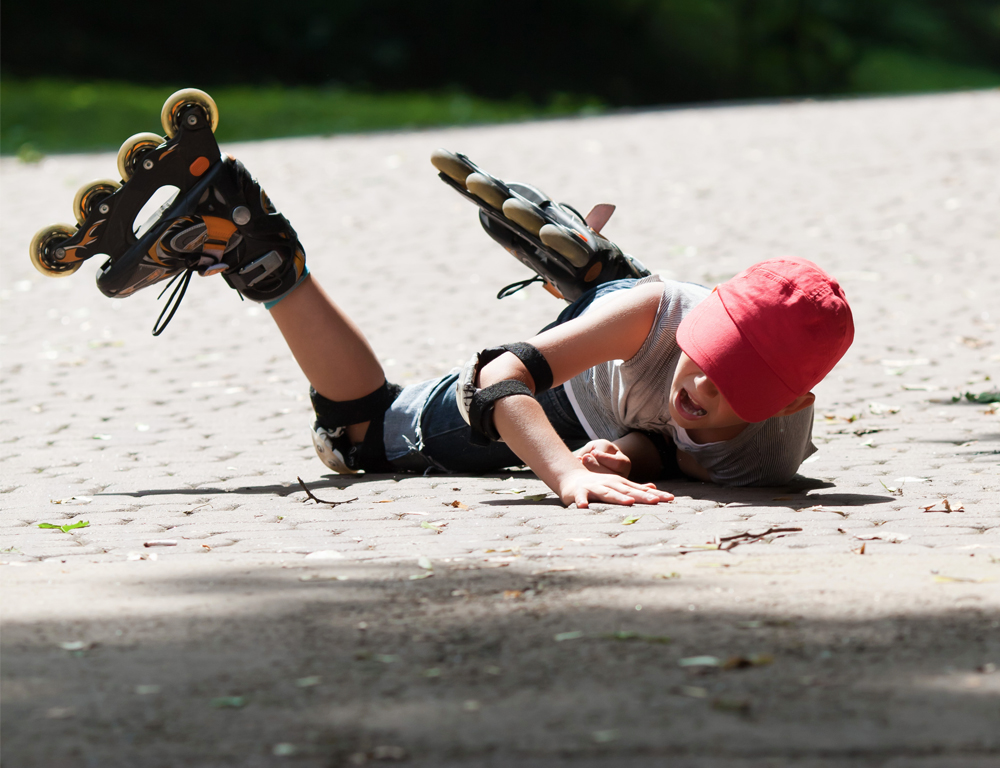The Medical Minute: Falls a common – and preventable – cause of childhood injury

Some falls are just part of childhood. Learning to walk and nursing scraped knees are milestones that few kids escape. But more serious tumbles – from beds, stairs, playground equipment and windows – are often the most easily prevented.
“Two weekends in a row now we have seen children who have fallen from windows,” said Dr. Mary Catherine Santos, a pediatric surgeon and trauma physician at Penn State Health Children’s Hospital. “It's time to remind people.”
Unlike other types of falls – which are more common during certain stages of childhood – falls from windows send toddlers through teenagers to the emergency department. A 10-year study found that more than 5,000 children are treated each year nationwide as a result of falls from windows.
While some kids act like nothing happened to them afterward, others can end up with concussions, fractures and bleeding. Falls from higher windows or onto harder surfaces can even result in death.
“Some falls are more dangerous than others – and we may not be able to prevent all of them,” Santos said. “But some, we can. There are ways to make things a little safer.”
Emmy Sasala, a health educator with the Pediatric Trauma and Injury Prevention Program at Penn State Health Children’s Hospital, offers the following tips for preventing the most common types of falls.
Windows (All ages)
- Move furniture and remove nearby items that a child could climb on to access windows.
- Use window guards or stops that prevent windows from opening more than four inches.
- If you have newer windows, consider opening them from the top rather than bottom for ventilation.
- Always keep windows locked when they are closed. A strong child may be able to push up a closed window.
- Know that a window screen cannot prevent a fall.
Stairs (Age 3 and younger)
- Use hardware-mounted baby gates at the top of stairs – and at the bottom as well, if possible. Unlike pressure-mounted gates, they can't be easily pushed open.
- Read the information on the gate you get to ensure it meets your needs and that you are using it correctly.
Bed (Age 3 and younger)
- Infants should never be placed on an adult bed to sleep. If an infant is placed on a bed when awake, they should never be left unattended.
- Don't allow children to use the bed as a trampoline.
Playgrounds / backyard play sets (Ages 5-8)
- Make sure the playground equipment has a surface such as wood chips, rubber, synthetic turf or pea gravel underneath that can help absorb the shock and force of a fall.
- Check signs to ensure that the equipment is appropriate for your child's ability level.
- Be involved with or attentive to your child's play.
Equipment for younger children
- Use the straps on swings, strollers, high chairs or booster seats so children don't fall from them.
- Avoid baby walkers and use a stationary baby center instead, which allows movement and activity for the baby without access to dangerous areas such as stairwells.
“It is hard as a parent to give your child your full attention while accomplishing necessary tasks around the house,” Sasala said. “If your attention must be away from your child, make sure they are in a safe place.”
The Medical Minute is a weekly health news feature produced by Penn State Health Milton S. Hershey Medical Center. Articles feature the expertise of faculty physicians and staff, and are designed to offer timely, relevant health information of interest to a broad audience.
If you're having trouble accessing this content, or would like it in another format, please email Penn State Health Marketing & Communications.
